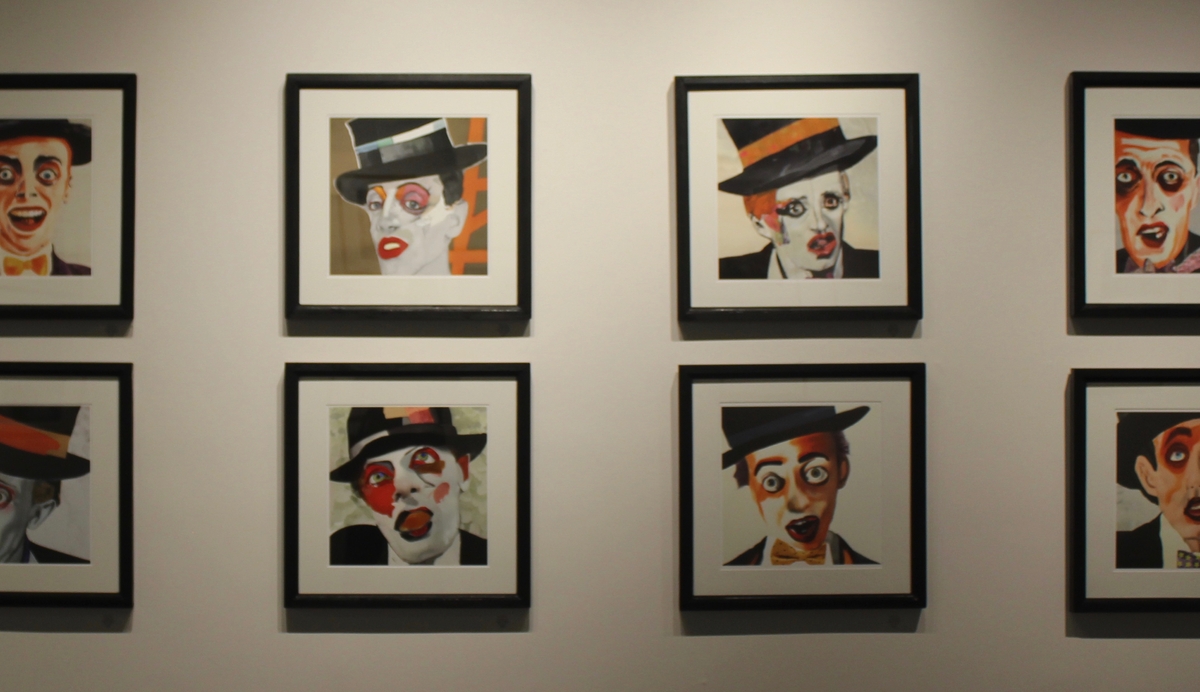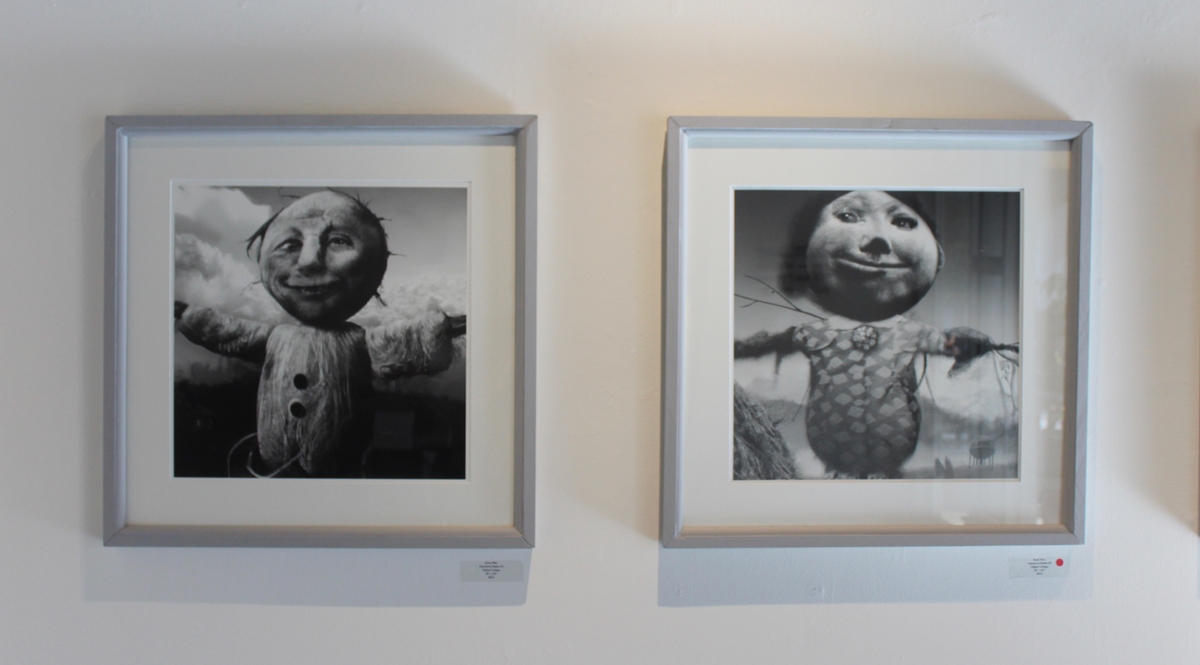
One wall of the gallery is a long stack of lively faces, the energetic style matching the animation in the faces. They match their subject, a clown in the old-school sense, more Charlie Chaplin than Ronald McDonald. The artist, Brian Flinn, has numbered the series under the title Auditions. It’s an entertainer looking for a gig. But for Flinn, it’s a sly double meaning, because it’s also a test run for new way for making art. Does it pass?
The series of faces are part of “Adjusted Intentions,” a show of work by artist Brian Flinn running concurrently with photographer R.F. Wilton’s show “Forces of Attraction” at Kehler Liddell Gallery, 873 Whalley Ave., through Oct. 8. Both shows see the artists working through variations on visual themes that fascinate them, through very different means. And even if the shows may not necessarily be meant to be paired, taken together, they have something pragmatic to say in the polarized debate about the use of artificial intelligence to create art.

“Adjusted Intentions” has an explicit connection to AI. “The works in this exhibit share a common attribute in that they all rely on technology as a major component of their development,” Flinn writes in an accompanying statement. “In the fall of 2022, I started to look more intently at the new capabilities of AI imaging software and began a series of works that employed such software as part of the evolutionary development in art making.” Visual-art AI has come under fire for its ability to mimic existing artists’ styles in new pieces after it has been fed scans of those artists’ old pieces. Artists claim copyright infringement, or theft of intellectual property. Flinn takes a different approach; as he relates, “many of the works in this exhibition have seen Dallee‑2 as a contributor at some point in the process.” By “inputting earlier works of mine into the program, new variations and possibilities became material from which to rebuild and reinvent older themes.”
“New tools like this will drastically change the landscape of making visual imagery, and like every major innovation, it portends rich benefits as well as complex challenges.”
Flinn proves himself an artist thoroughly ready to explore those challenges. By using AI tools to sample his own work rather than someone else’s, he sidesteps the now-familiar argument about AI being theft, and opens the path toward a more nuanced understanding of how artists can collaborate with AI to deepen their own relationship with their art. Sure, Flinn could have produced variations of the same work himself; after all, he produced the initial pieces. But, as he explains, he used AI to be open to the happy accidents that the software might produce, the ways it might tweak, transform, or change his work in unexpected ways. Flinn then remains the artist behind the art in his ability to choose which AI images work. The AI could churn out millions of variations. Flinn gets to decide which ones move him enough to put a frame around them, using the same facilities of reason, intuition, emotion, and luck that guided artists before the first computer was invented.

R.F. Wilton’s photographs, on the opposite wall of the gallery from Flinn’s, are untouched by AI, but as he describes the show, parallels emerge. In his accompanying statement, he explains that “Forces of Attraction” is an “overview” of the “range of visual interests to which I have been repeatedly drawn over the duration of my 50-year engagement with photography.… Each piece serves as an exemplar for dozens, if not hundreds, of similar examples of visual study.” The rest of the statement explains why he might return, again and again, to the same theme, the same approach: because there’s always something more to find, and because the search itself carries rewards. “At its best,” he writes, my creative process entails entering a sort of flow state characterized by a blend of cognitive vacuity, perceptual acuity and emotional receptivity. In that state of being, I’m available for any of a myriad of things, qualities, moments, feelings or phenomena to make an impact.”

Flinn generated his variations on a computer screen. Wilton created his variations in the open air, one shutter snap at a time, and — at least certainly decades ago — one darkroom development at a time. The prospect of technological sentience and accusations of theft that go along with are distant from Wilton’s work, but technology itself is just as involved, from the mechanical workings of the camera to the chemical reactions in the darkroom. And as Wilton describes, in his ideal artistic state, he’s just as open to those happy accidents, whether they’re brought about by being in the right place at the right time, or whether an image didn’t develop the way he thought it would, but better. And just like Flinn with his AI-generated iterations of his own work, Wilton makes his show a success in the end by being a good editor, selecting the images that work the best, according to the same sense of reason, feeling, happenstance, and intuition.
The two shows succeed separately on their own merits, with works that are engaging, funny, engrossing, and sublime. Together, they make an argument for AI as just another way to make art. In less scrupulous hands, it makes forgery — an old crime — easier than ever. But deployed for the purposes of artistic exploration, it can take the artist new places, just like cameras, canvases, and pigments on the walls of caves have been doing all along.
“Adjusted Intentions” and “Forces of Attraction” run at Kehler Liddell Gallery, 873 Whalley Ave., through Oct. 8. Visit the gallery’s website for hours and more information.

AI has no soul. Therefore it isn’t art, but a pale imitation of art and the artists souls that create art.